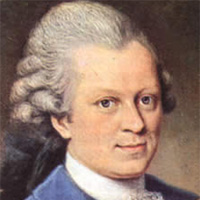From Laocoon by Gotthold Ephraim Lessing: An Overview
Lessing in his criticism from Laocoon, formulates the fundamental difference between painting, sculpture and poetry. In his view painting employs figures and colors in space, whereas poetry employs articulate sound in time. Thus "painting can imitate actions, but only by the way of indication and through the means of bodies".

Gotthold Ephraim Lessing
Poetry can paint bodies, but only by the way of indication and through the means of actions. Therefore, in poetry, there is “frugality in the description of the bodily objects”. Painting can avail itself of one moment of action and poetry can make use of one single property of bodies. Painting is static, but poetry is a moving picture. A poet describes, for example, the action of Achilles in detail, but a painter describes a particular action and paints it. The painter can imitate better than poets for individual object but for many actions, the poet can imitate better than a painter.
According to Lessing, painting is likely to perceive spatial closeness and must concentrate the most expressive moment in a chain of events. On the other hand, poetry has the task of representing an event spontaneously and in its temporal sequence. The essence of poetry thus lies not in the description, but in the representation of the transitory movement.
Lessing has talked about the varieties of poetry i.e. lyric, sentimental and dramatic. For him, dramatic poetry is of high standard because it changes the common languages into natural languages. His analysis implies that art is fundamentally mimetic. Modern art raises new questions about the relation of temporal activity to static representation. Lessing emphasizes the fact that each medium has particular limitations and possibilities.
